Andrew Hollis began his career in South Africa in the 1990s, producing paintings that were influenced by the political climate of his native country, and the sociocultural legacy of apartheid. The aim of these works was primarily to look at issues concerning identity and cultural stratification by engaging with historical meanings surrounding the painted portrait.
While still in his early 20s, Andrew left South Africa, first for the UK, and then the Middle East, but it was during his travels in Latin America—ostensibly to continue his work in relation to the political history of that region—that Andrew began looking more closely at the phenomenon of representation itself, specifically, how the inevitable loss of information caused by an image’s (re)production can impact the message of the work, and the role that the physical-material aspects of the image plays.
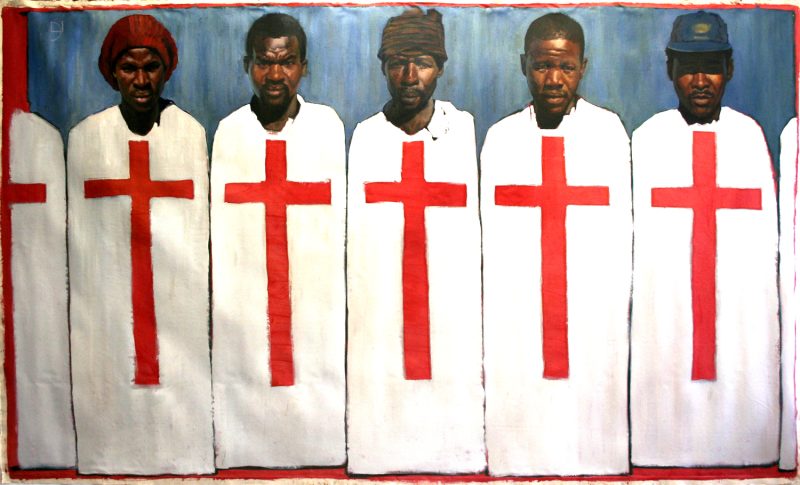
Elevation to Human, 1999 oil on canvas, 120x200cm
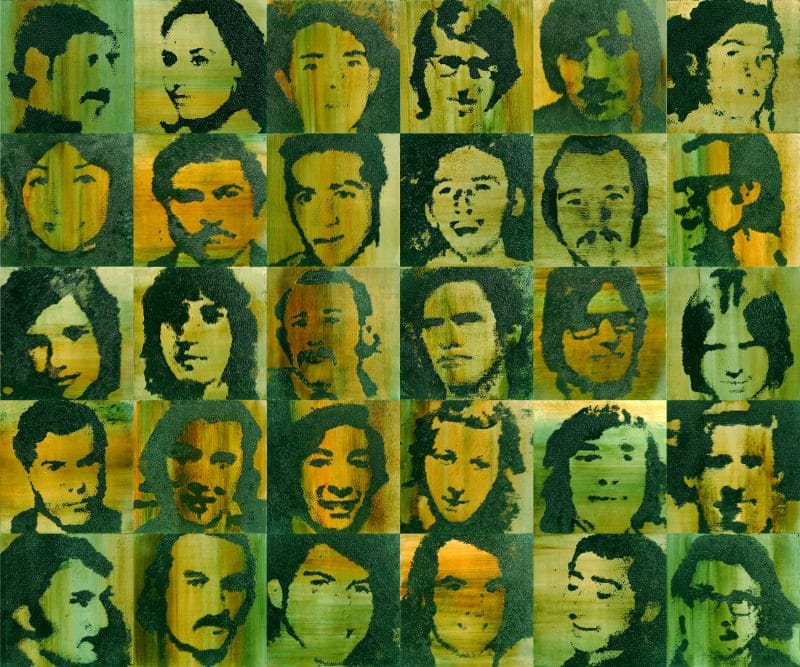
Anonymity of Reproduction, 2004 acrylic on 30 pieces of aluminium, 125x150cm
On his return to the UK, as well as during a yearlong stay in Germany, he continued with these Identity paintings, both in relation to the situation in his native land as well as the new environments in which he found himself. In time, however, his interest in representation would lead to him to produce work that was focused more exclusively on the limitations of the phenomenon itself. In some of these pieces, he would intentionally undermine their communicative possibilities by destroying or removing information from them, in others, he would distort form and colour, each time with the aim of interrogating the limits of the work’s ability to connect to reality.
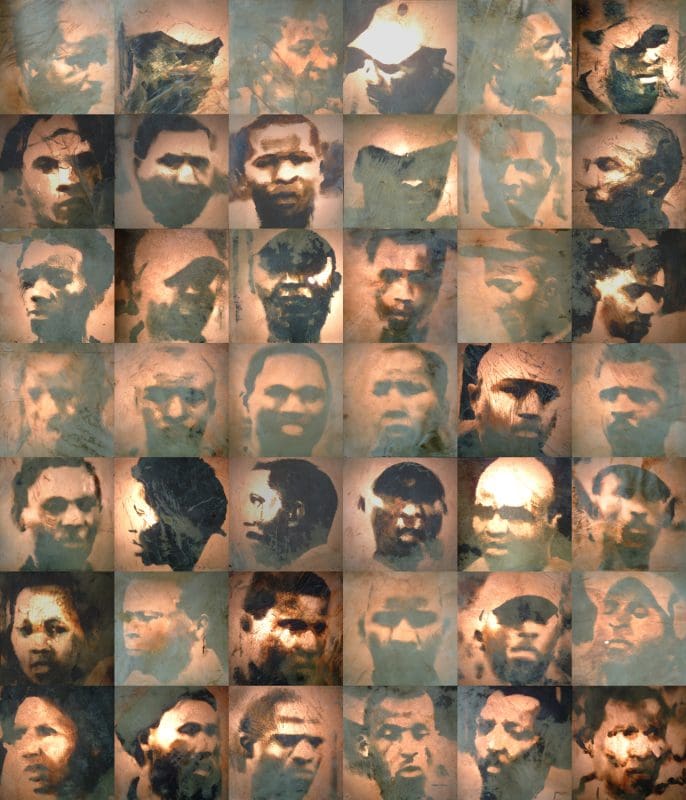
Group of 42, 2005 oil on animal skin, 210x180cm
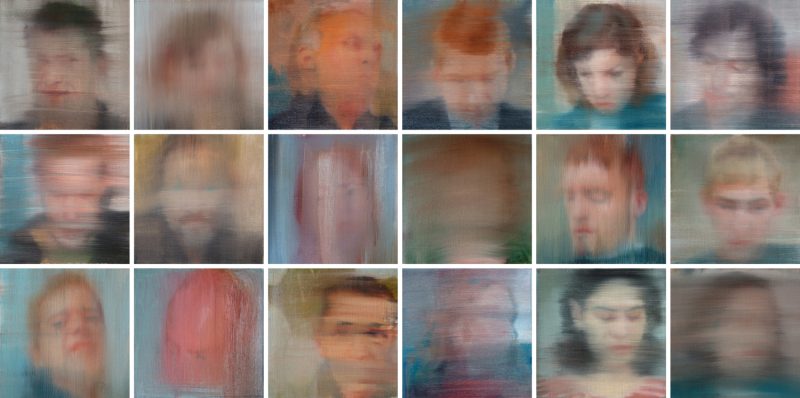
Negations Series, 2005 oil on linen, 25x25cm each
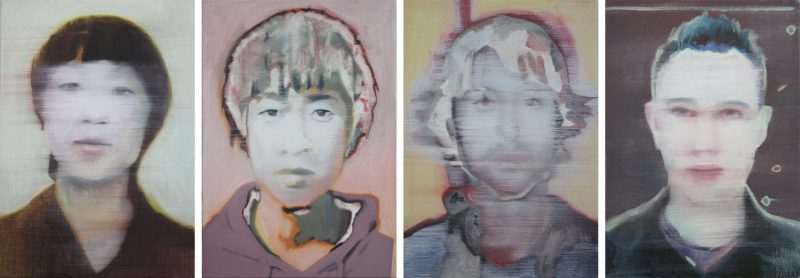
Identity Series, 2006 oil on linen, 35x25cm each
This interest in the image’s connection to reality would lead Andrew to produce work that attempted to represent something of his own present reality. This he did by focussing on historic images that were directly connected to himself or his loved ones. It was during the production of these Personal History paintings that the artist began to understand more clearly the limitations of what images could communicate.
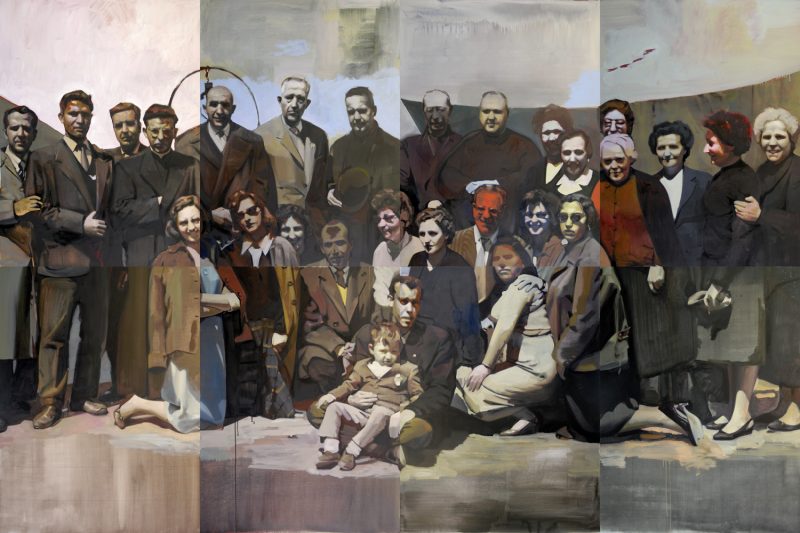
Everyone in the World, 2007 oil on linen, 240x360cm
Andrew’s interest in the semiotic function of the art image would take centre stage in the work that he produced while earning his MA at Central Saint Martin’s College in London, fed principally by his exposure to the theories of Charles Sanders Peirce. This deeper understanding of the way that signs work—and our reliance upon them for any kind of meaningful interacting with each other—married with Roland Barthes’s work on the difference between the connoted and denoted messages in photographs, and Jacques Lacan’s teachings concerning the Symbolic order, would lead Andrew to begin work on his Structuralist paintings, work that highlighted the role that images play not only in the creation and maintenance of dominant ideologies but their role in the preservation of all cultural structures.
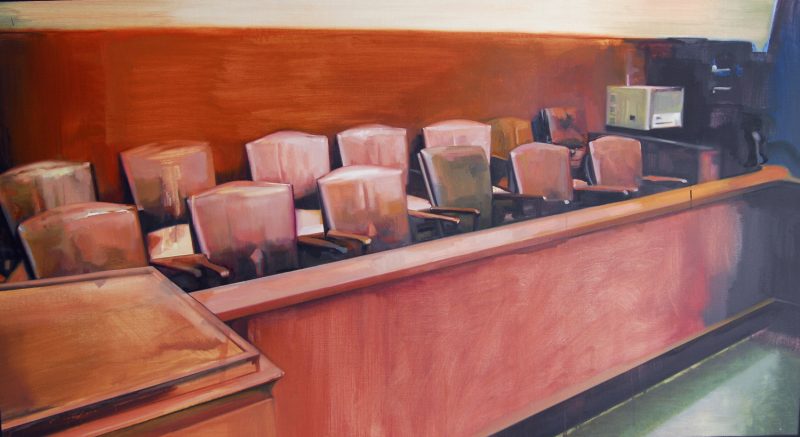
13 Seats, 2007 oil on linen, 85x160cm
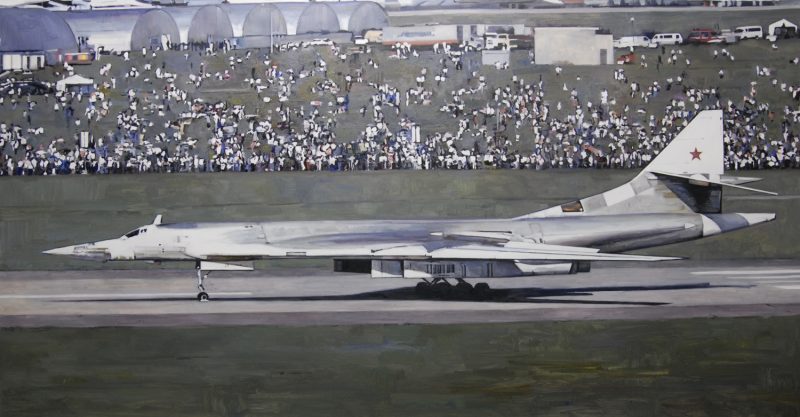
Soviet Bomber, 2008 oil on linen, 130x250cm
In 2009, Andrew relocated to Spain where his continued theoretical work concerning semiotics in art resulted in his 2012 book, “Representation, the Objective Sign and the End of Art”, in which he briefly charts the impact that the nature of signs has had on the evolution and possibilities of artworks. As concerning his artistic production, this focus on the instrumentality of representation led him to produce paintings that interrogated the witnessing role of images; combining image elements from encyclopaedia to create his Non-real Histories or Non-historic Realities, paintings that lie intentionally between fact and fiction.
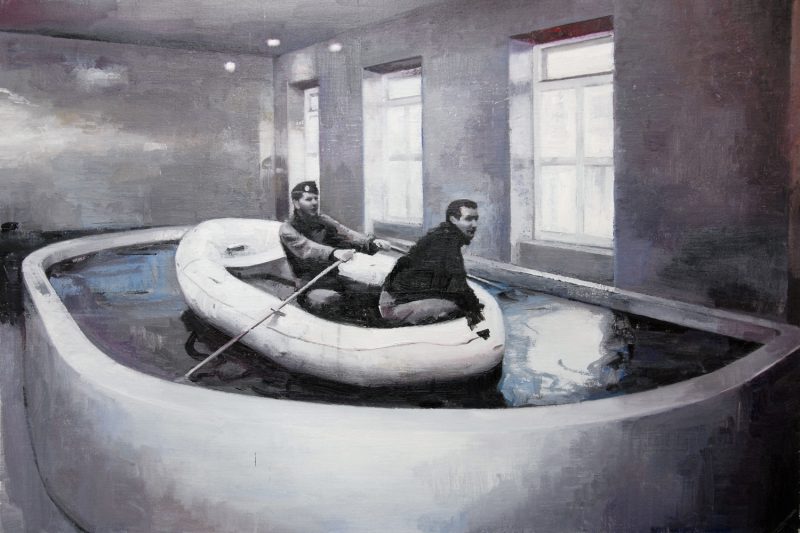
Pool with Rowers, 2009 oil on linen, 50x75cm
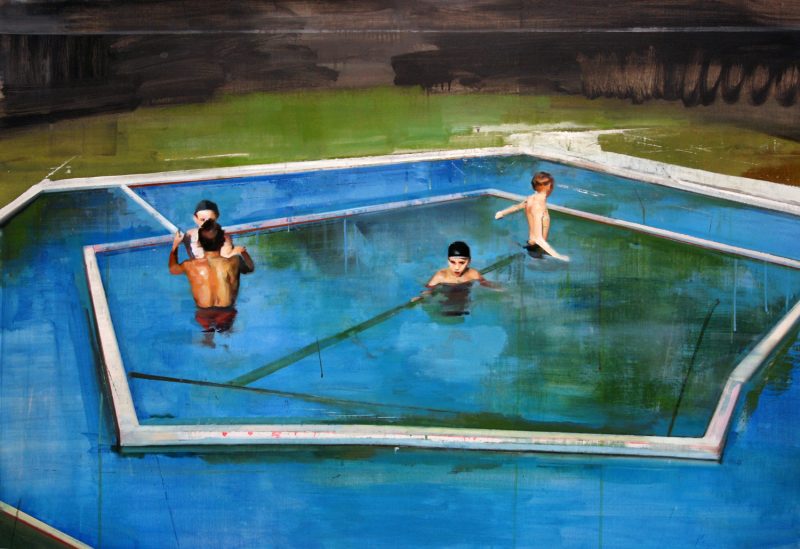
Children with Pool, 2010 oil on linen, 90x130cm
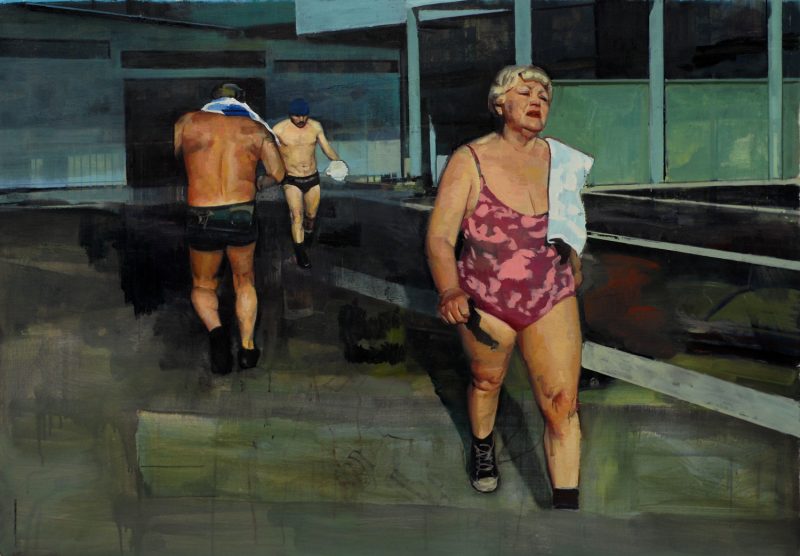
Bathers with Building, 2011 oil on linen, 90x130cm
Looking for a way to put even more focus on the semiotic elements that he was using in his work, Andrew finally broke with the narrative aspect of painting altogether. The abstract-figurative Transrepresentational paintings that he began producing at this time, made by intersecting the iconic elements of the lost (pictorial) realities that he found in the encyclopaedic images, resulted in works where the message was now completely divorced from the original meanings of the iconic elements themselves.
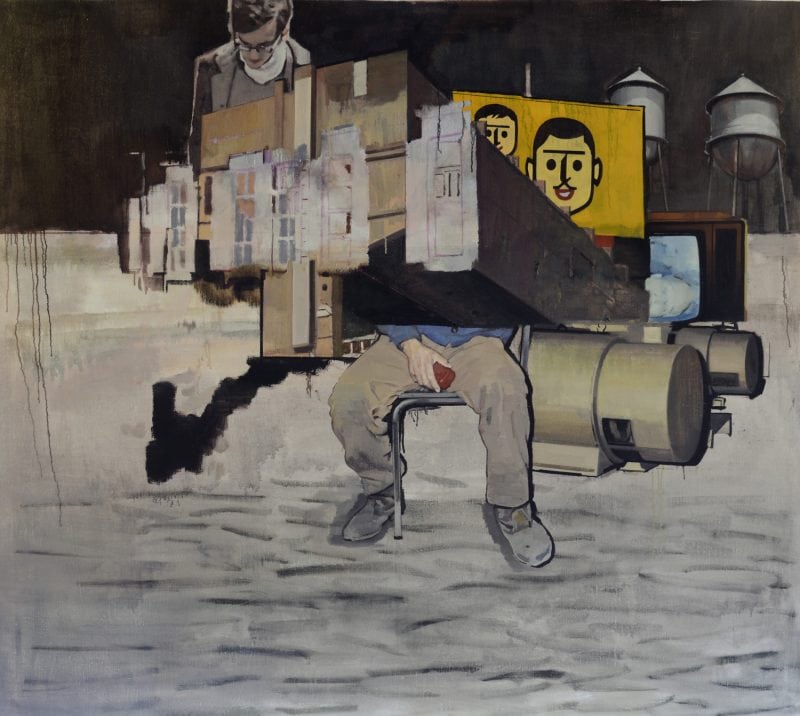
Transrepresentation 1, 2014 oil on linen, 160x180cm
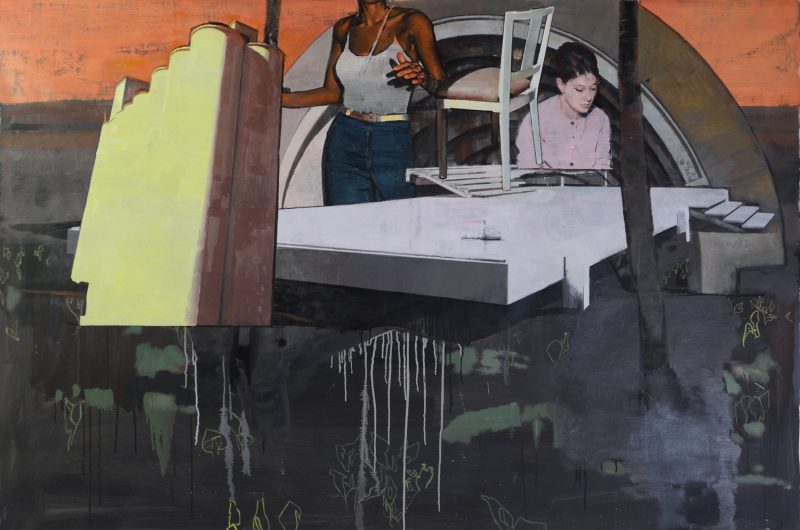
Farnsworth House, etc., 2014 oil on linen, 120x180cm
Most recently, Andrew has turned his attention to the possibilities and limitations of three-dimensional representation, producing sculptures that focus on the semiotic possibilities of objects. His ongoing interest in the impact that the possibilities of representation have had on the evolution of artistic production has led him to continue his research through the Complutense University of Madrid, where he is currently doing a PhD in Sculpture.
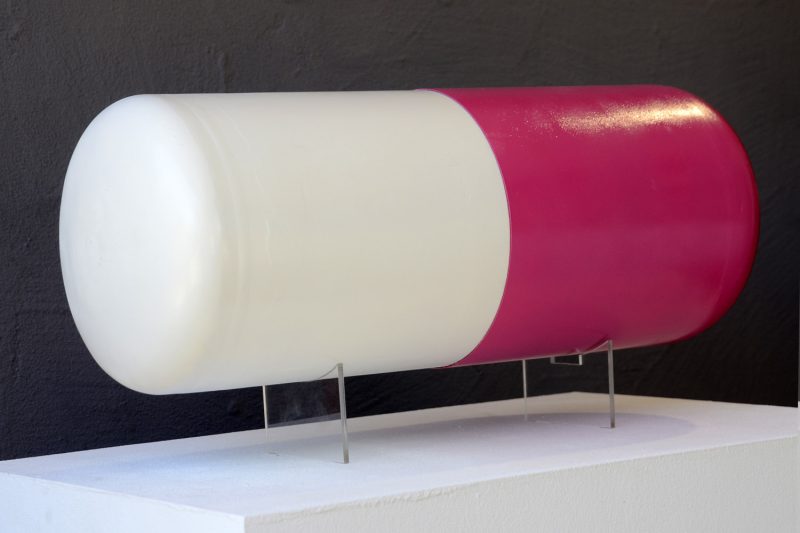
Pill, 2019 steel and paint, 24x59x24cm
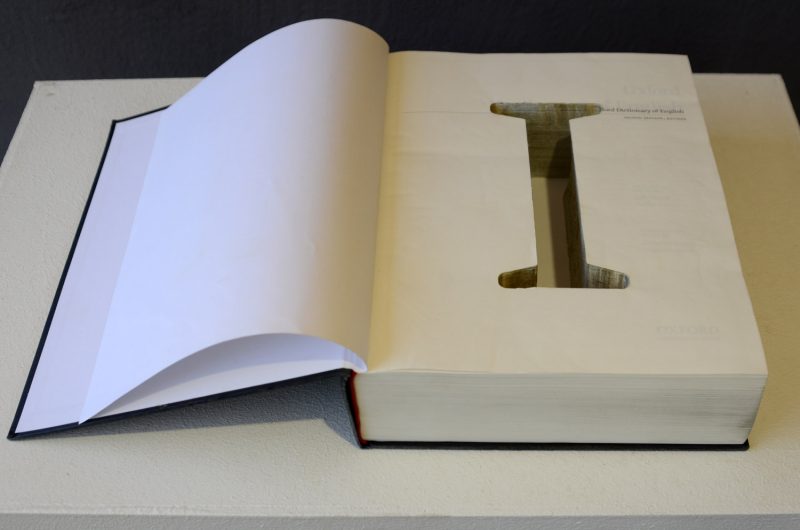
Language, 2019 cut dictionary, 27x41x7cm
Andrew Hollis has lived and worked in a number of countries and has exhibited work in South Africa, The UK, Germany, Spain, The Netherlands, Austria, The Czech Republic, Israel and Guatemala.